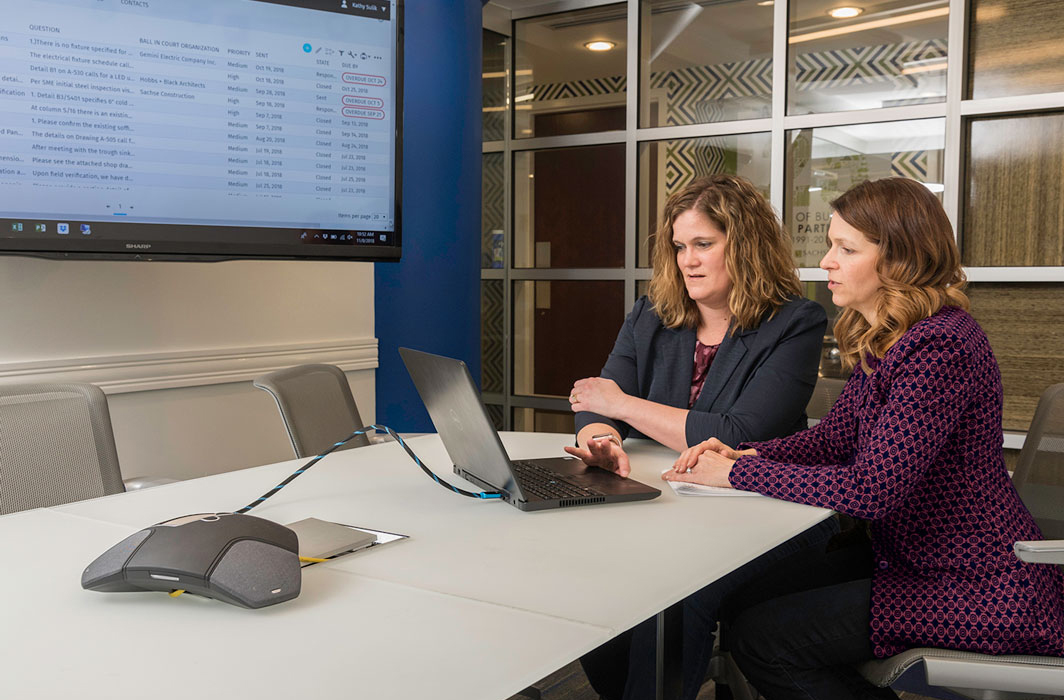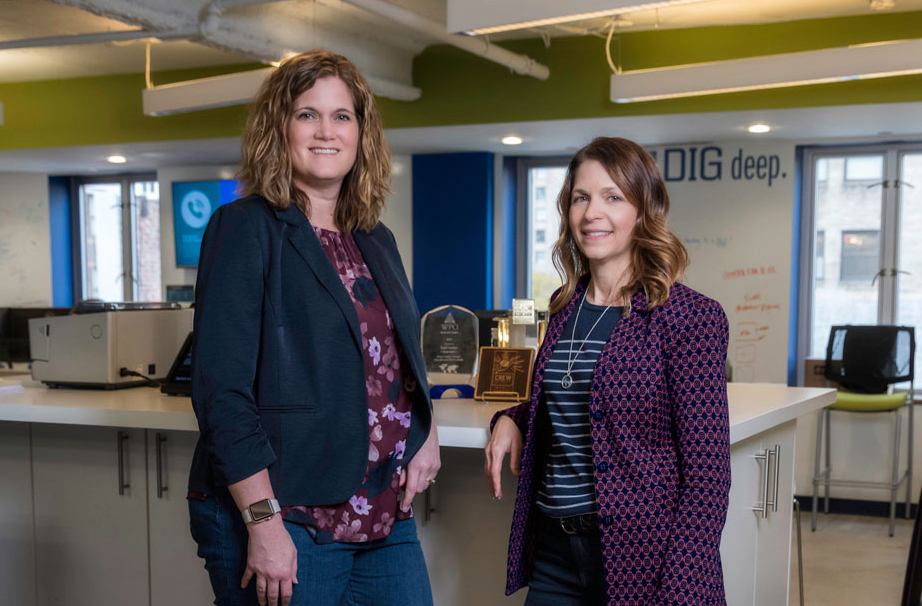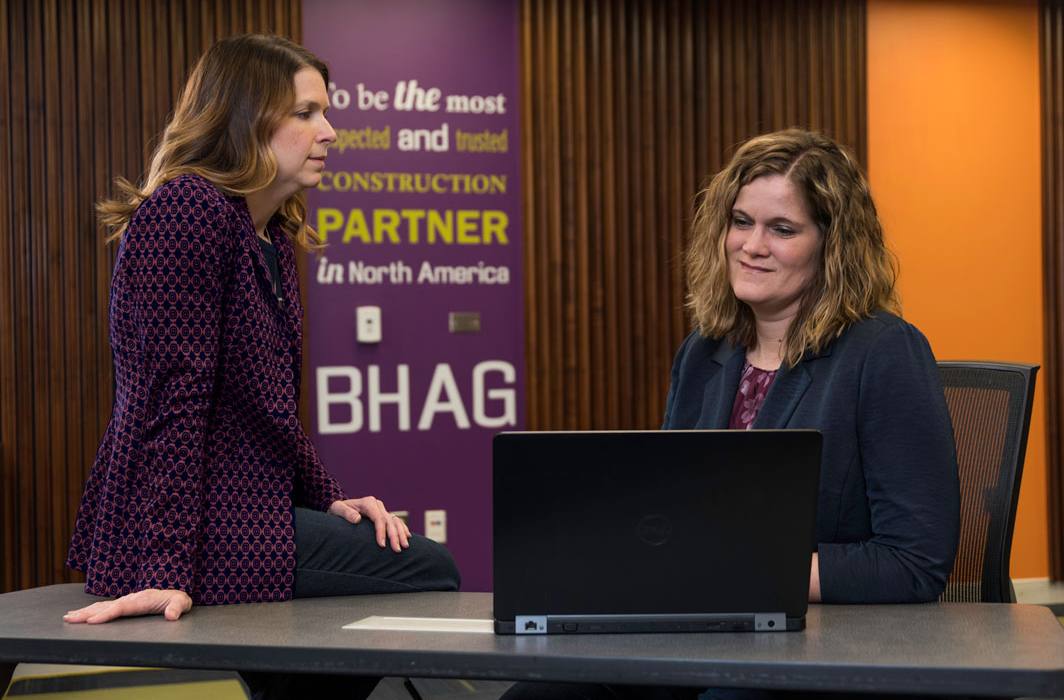
The world around us continues to evolve as new technologies are developed, and contractors are under increasing pressure to digitize and modernize their own operations to keep pace with client demands. Cloud computing, mobile devices and apps, sophisticated and integrated construction management software, drones, artificial intelligence and many more advancements are reshaping an industry that once lagged in technology adoption. Now, a powerhouse of dynamic digital contractors is preparing to lead the next wave of innovation.
One of these digital leaders is Sachse Construction—a premier commercial construction firm recognized as one of the most trusted and respected construction partners in North America. Founded in 1991 and headquartered in Detroit, Sachse Construction has built millions of square feet of projects spanning the retail, commercial, multifamily and institutional sectors. The company’s strategic growth and success can be attributed to building strong relationships with clients and embracing the latest technologies to foster project innovation and find new ways to work smarter.
A Need to Modernize
For Andrea Wright, Sachse’s approach to technology is just common sense. “It’s about using technology to more efficiently and effectively manage your projects.” Wright spent just under 7 years with Sachse as the firm’s director of empowerment, handling the company’s training, processes and enterprise resource planning (ERP) software. She has helped guide Sachse through technology changes, including the implementation of a new construction management software platform. An ardent proponent of technology, Wright recently started her own company, CTP Solutions, LLC, to help contractors, including Sachse Construction, modernize their operations and maximize team member potential.
“It’s imperative for contractors to embrace change and digitize,” Wright said. “Construction has traditionally been way behind in terms of technology, but that’s quickly changing now. If we want to appeal to younger generations of construction professionals, we’ve got to get in the game. Contractors are also being required to build faster, smarter and have more mobility—to do things in real time at the office, at the jobsite, on the go. If you are not leveraging technology to do that, you’re just not going to get the job done anymore.”
Kathy Sulik, a commercial project manager for Sachse Construction, said that as clients become more sophisticated themselves, they’re increasingly wanting to use contractors that leverage and embrace the newest technologies as well. “We’re finding that as part of the request for proposal (RFP) process, clients want to know what kind of technologies we use,” Sulik said. “We’re going after some of these companies that are on the cutting edge of technology themselves, and if we’re not keeping pace with them in terms of the technology we use, we could find ourselves not able to even get our feet in the door with them.”
But how do construction managers, especially those with limited internal resources and IT staff to facilitate significant technology and process changes, get started? Wright said the journey begins with vocal advocates for change and putting an action plan in place.

The Technology Journey
Sachse began embracing technology long before Wright came on board. Around 15 years ago, when the company needed a way to organize contacts for projects, its teams created a global address list, or GAL program. Soon after, a developer was brought on staff to turn the GAL into a proprietary software for operations and estimating. As the business grew, different components were added to fill any needs that arose. Sulik said the biggest hurdle was that the GAL couldn’t connect to the company’s accounting software at the time. “The GAL managed changes, but it didn’t manage the contract or budget,” said Sulik. “If we went to accounting for a job cost report, those costs could be outdated by the time the work occurred in the field. Then, you had to get a paper invoice, and you could have a month’s lag time before costs hit your job. That’s a huge gap in your project financials.”
To make matters worse, Sachse Construction’s retail group had projects that moved quickly—anywhere from 6 to 12 weeks long. “The job is finishing up and you’re just now getting data from your accountant. You’re just running blind,” Wright said, noting that the company explored every possible workaround with its software programs. “We had to make a decision. Were we going to be software developers or run construction jobs?” Wright and Sulik were among a leadership team Sachse Construction created nearly 3 years ago to look for an ERP software platform designed for construction that would house operations and accounting in one system and share the same data. The company also wanted a solution that was scaled to accommodate both company growth and future technology advancements, as well as a vendor through which it could forge a technology partnership.
The Sachse team conducted research, studied reviews and sat through countless software demos. They also invited end users into the process to solicit their input, providing a layer of transparency throughout the entire organization. Peer-to-peer networking offered the most insight. The team split up more than 30 companies, contacting each to see what solutions they were using, how they were using them and what results they achieved. In the end, Sachse opted for Viewpoint’s Vista ERP solution and the integrated Viewpoint Team project management platform to replace both the accounting and proprietary operations software. Sachse’s team found these software solutions to have the complete, integrated functionality they were looking for.
The solutions also provided cloud-based accessibility, which tied together field and office operations, providing automated workflows and collaboration that have helped the company realize significant boosts in productivity and project control. The user-defined fields that the software provided were important,” Wright said. “When updates were made to the software, they didn’t break the user-defined fields or the customized reports. That data integrity was important to us and we found that other software couldn’t do that. We also liked the business intelligence tools the software provided and that Viewpoint shared a similar technology strategy and was continually evolving and investing in its products. That was key to a long-term technology partnership.”

Overcoming Fears: A Technology Commitment
JBKnowledge’s 2017 Construction Technology Report found that construction companies tend to adopt software at the departmental level rather than organizationally. In many cases, contractors select out-of-the-box solutions that aren’t tailored to the construction industry or don’t integrate well with other software programs already in use throughout the company. Two key reasons for this? Fear of disruption and change and a general lack of understanding how technology can improve construction professionals’ day-to-day lives. “People don’t like change because they often don’t understand the why,” Wright said. “It’s important to communicate and let them know it’s coming. Let them come in and see the software; get them involved in the process; and let them know what’s in it for them. Have them try it out and test it. It’s about trying to be an open book to them.”
Sulik noted that during Sachse’s ERP process, the team identified end users’ biggest pain points and worked to show how the new software could address them. “For example, if a dumpster invoice came into the old system, you had to write a change order, issue the change order, wait for it to be approved and sent back. It was just this cumbersome process—all for a simple dumpster. It could happen five times a week on a job. There was a lot of paperwork tied up around that,” Sulik said. “We showed how, in the new system, the invoice simply gets routed to me as the project manager, I code it to the right job or phase code, approve it, and it’s done. If we can show them how their day-to-day tasks are going to improve with the new system, that’s a big part of getting folks on board.”
Wright said keeping team members continually informed, demonstrating how their jobs can continue to get easier through technology, and training them to use all of the features and functionalities available to them to maximize the technology investment is critical to success. “People often think, ‘We’re going to do this implementation, then we’re going to be done, and then we’ll be back to business as usual, but that’s not the case if you’re doing it right,” Wright said. “I think of it more like a new adventure. You’re now on this new trajectory of continual innovation, and it never stops. If you’re going to modernize your operations, it’s just the beginning. You can always find new ways to work smarter and more efficiently, as long as you keep leveraging software and technology to the reach that next level.”

Tips for Getting Started
Wright understands that facilitating change and disrupting processes that have been in place for years, even decades, can be a challenge—one that prevents many contractors from taking the leap. Despite the initial costs and work, the return on investment and untapped opportunities a technology shift can bring are well worth it. She shared four tips for contractors who are not sure where to start:
- Designate a technology advocate—“You need someone who is very focused on operations software. It’s not just ERP software; it’s building information modeling (BIM) software, project software, etc. You need someone to focus on how to best leverage the software and see how it all can work together so that you don’t end up with more technology silos. If you’re going to make the investment, you’ve got to make a commitment to evolving your processes and company culture as well.”
- Seek help—“There are people out there that can help you at every step of the implementation, from evaluating software to after go-live support. So, get help. It might seem expensive, but your return on investment for this will be ten times what you’re going to spend.”
- Plan accordingly—“You need to make sure you’re committing the necessary resources from your company. One person cannot successfully implement the new system. You’re going to need people in various roles from all over the company to come in and really rethink and restructure how you’re doing business.”
- Embrace the idea of change—“Don’t take your processes (the routines you’re used to) and try to morph the new software to fit them. Instead, take the software and change your processes to use the software as it was meant to be used. If you try to change the software before you truly understand how to use it with all its features and functionalities, you’re going to ruin it before you even start.”
“Change is hard,” Wright said. “And the people that are resistant aren’t just older folks that have been around in the industry forever; there are also a lot of young people who are just as resistant to change. That’s why a lot of contractors don’t get started down this path to transforming their operations. The industry is transforming, and contractors that don’t address this will soon be at a disadvantage.”
